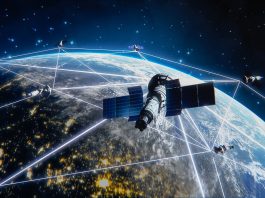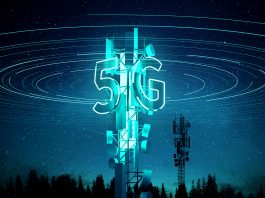Dylan McGrath, Industry Solutions Marketer at Keysight Technologies, explores the vast benefits of non-terrestrial networks and how they could shape the seamless global connectivity of the future.
Non-terrestrial networks (NTNs) represent an exciting new frontier in communications as they extend the reach of 5G into regions lacking terrestrial infrastructure. NTNs use both satellites and high-altitude platforms such as balloons, airships, and pilotless aerial systems in the stratosphere to ensure coverage and reliability in virtually any scenario. Decreased costs and new capabilities in terrestrial 5G are combined to make NTNs increasingly viable, ushering in a new era of true global connectivity and a space-based IoT that will permanently change our perception of communication.
3GPP’s 5G standards recognise NTNs as a part of the 5G connectivity infrastructure. One of the network’s chief benefits is multi-connectivity, as users connect through both terrestrial and satellite links, with the former handling low-latency traffic and satellites reserved for high-latency traffic. There are a multitude of fascinating use cases to explore here.
Augmentation of terrestrial networks
5G non-terrestrial networks will fill gaps in cellular coverage, allowing operators to enhance the latter without driving up costs.
NTNs will also bolster network resiliency, increasing availability and preventing outages. In addition, they will enable operators to quickly restore service to areas impacted by natural disasters. They can also be used to dynamically enhance coverage in response to changing circumstances. Take a Premier League game under typical terrestrial network conditions – data throughput and connectivity suffer with the influx of spectators posting and streaming.
With NTNs, however, drones could be deployed as flying base stations above the stadium to temporarily boost connectivity and increase bandwidth, leading to a glitch-free experience for the game’s duration.
Non-terrestrial networks can bring global connectivity
As NTNs mature, they will enable global broadband connectivity, even in isolated regions.
Consider remote locations across the globe, such as parts of Canada or Tibet, where establishing ground infrastructure to support terrestrial connectivity is either not economically viable or physically impossible.
Non-terrestrial networks will change this by providing consistent, high-speed service in even the most inaccessible areas. Some vendors have already introduced services that support an SOS messaging capability—for example, enabling a lost hiker on a remote mountain range to summon help via their smartphone.
NTNs will make this pervasive and eliminate connectivity challenges we associate with sailing, camping, mountain climbing and other activities in isolated areas. This will also have significant implications for aerospace and defence, and other sectors operating in geographically remote regions.
Remote pipeline monitoring
With speeds of up to 20 Gbps, 5G NTN’s high-speed data transfer capabilities are a significant benefit for applications that rely on real-time data processing—for example, remote monitoring, surveillance, and autonomous vehicles (AVs.)

In the latter industry, non-terrestrial networks can augment terrestrial networks and ensure vehicle safety in the event of congestion or outages, and in areas with poor connectivity. In addition, offshore oil platforms and other enterprises operating in remote regions without terrestrial infrastructure will be able to monitor operations and equipment more closely as the technology matures.
Image intelligence
The Ukraine war provides an excellent example of this insight, as satellite images were the first to show the military vehicles Russia amassed in advance of its attack. This intelligence will become a key weapon in future military conflicts, as well as in tracking global warming, pandemics, and other macro events.
Roadblocks to innovation
As with any new technology, before realising these and other 5G non-terrestrial network possibilities, the industry first must overcome numerous challenges. These include design considerations.
The link distances are much longer with NTNs than with terrestrial networks, and the resulting implications must be accounted for in the design process to avoid issues. Introducing a fast memory in which the signal is written and then read out at a different speed is one important step. This addresses both the propagation delay and high Doppler frequency associated with NTNs.
Where and how to process data is another concern. In most cases, this will be determined by the individual use case and end goal. For industries such as the military, it may be better to design a satellite with a big computer, long battery life and a large solar array to facilitate edge computing of the data via the satellite.

This would enable divisions to spot changes in civilian movement or armament formation that could signal a hostile advance, as in the Ukraine example discussed above. In other scenarios, it might be better to send data to the ground for processing, which entails having the bandwidth necessary to facilitate the transmission.
Finally, NTNs have the potential to replace the legacy proprietary network and operator systems with total interoperability and universal service. Actualising this vision requires that network operators and satellite providers collaborate, share knowledge, and come up with new ways to bring services to the end users.
Much work remains before NTNs can fully deliver on their promise, but the future is closer than many might think. As we move towards making seamless global connectivity a reality, savvy companies should be preparing to capitalise on NTNs and all the possibilities inherent in a truly connected world.









